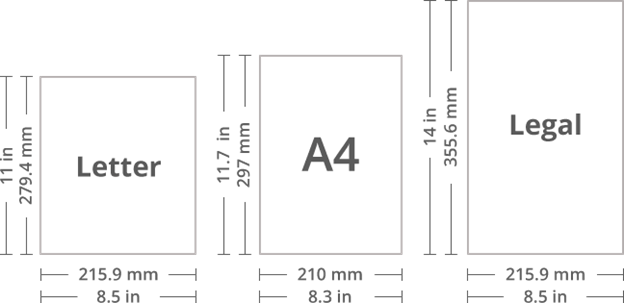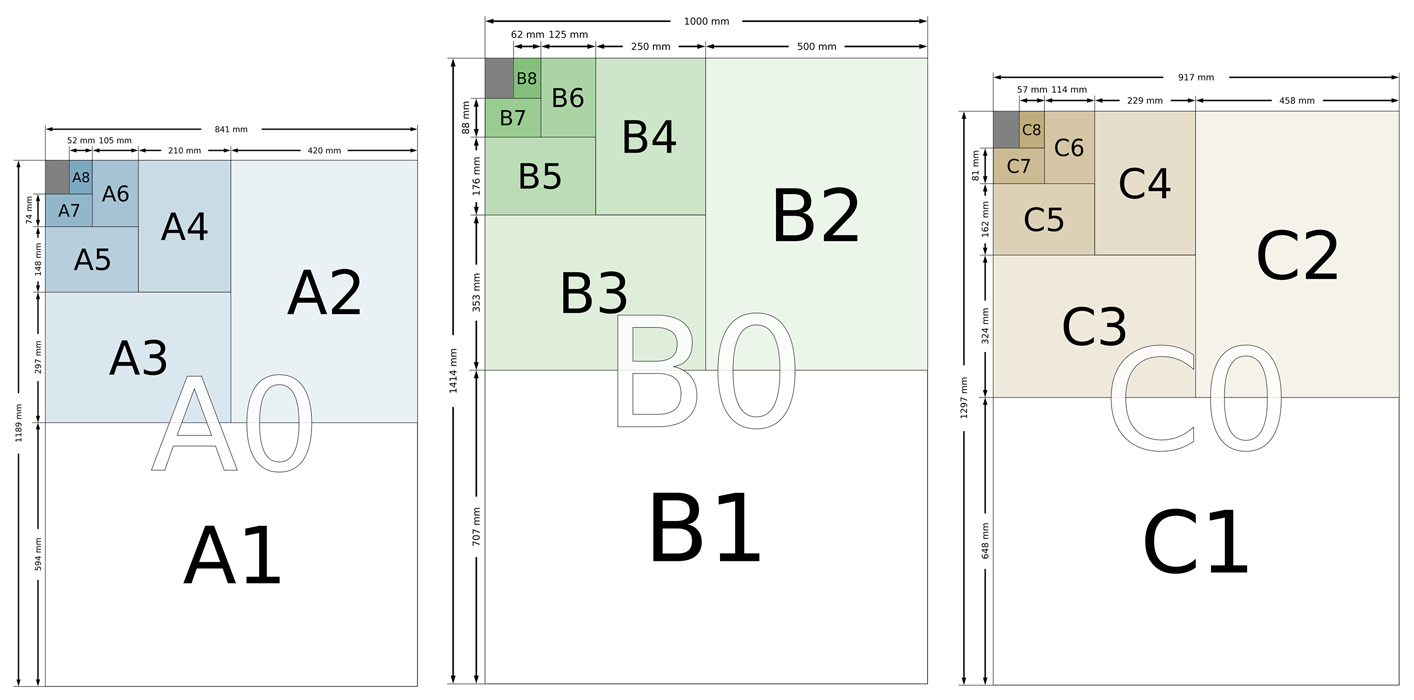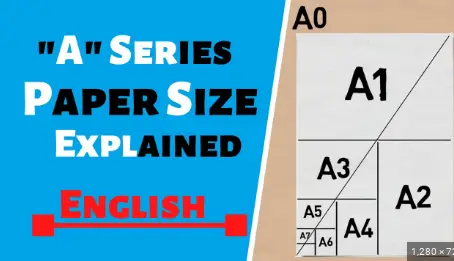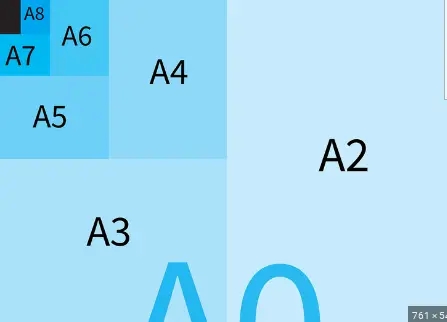Paper Sizes are of great use these days. We use paper for different purposes. Ranging from books to legal documents to even the minimal writing material and even newspapers, paper is in use everywhere. It would be challenging to imagine a life without paper.
Table of Contents
About A Paper Sizes
Try to think if there was no newspaper in the mornings when you woke up, no paper to write letters or print legal documents, and no paper for books to read! Life would have been difficult. But now let’s think of another thing. Papers come in different sizes. Large and small, big and thick, A Paper size.
But if you’ve noticed, all papers for similar kinds of work have the same size. And this is not just some mere coincidence. Legal documents are of the same size, our notebooks are of the same size, and in fact, now think how difficult it would be to arrange our books or our legal documents or our artworks for that matter if all of the paper sizes were different! This is the thought that led to the creation of International Standards for paper sizes. All 8 kinds of paper sizes are visible through this paper sizes chart.
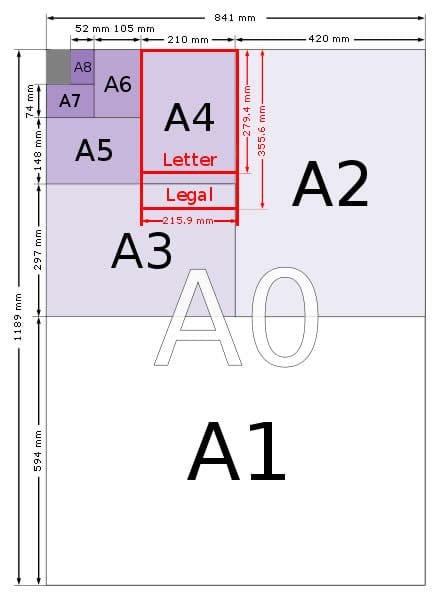
Earlier, different countries and regions followed different sizing standards for each type of document and paper, and this created a lot of hassle when exchanging legal work or letters among countries. After the ISO (International Organization for Standardization) was created, it decided to create a Universal Standard and Set of Rules for paper sizes.
Today we find standard size names starting from A, B, … to E and even other standards, and each has many sub-categories that specifically define how the paper sizes should be. Now that we know why and how these standards were makeup, we’ll get back to today’s topic about A Paper Sizes.
ISO 216 Standard for A Paper Sizes
The dimensions of each size in A Series are precisely distinct by the ISO 216 standard. The ISO 216 Standard is based on the German DIN 476 Standard. This can be even further datable back to the letter by the German scientist Georg Christoph Lichtenberg. In the message, he described the advantages of a √2:1 aspect ratio.
- When a paper of such an aspect ratio is the crease or cut precisely in two halves between its smaller edges, the two halves have the same √2:1 aspect ratio.
- When two papers of such aspect ratio are set side by side with corresponding big sides tied up, then the new big sheet of paper has the same √2:1 aspect ratio.
These two exceptional properties have led to making the √2:1 aspect ratio of a standard in ISO 216 for Paper Sizes, and their properties are now put-upon worldwide. This, along with a few other rules stated below, define the ISO 216 Standard.
Dimensions of A Series Paper Sizes (Paper Dimensions)
Simply select the standard paper size from the ‘Size‘ selector and the unit from the ‘Unit‘ selector. That’s it; the dimensions will show in the dimensions box automatically. These are all the legal paper size dimensions. So you won’t have to worry about mismatched errors.
So, we think the above table helped you in a proper way. If not, then go through the table mentioned below.
Table of Paper Sizes from 4A0 to A10/Paper Size Chart
| Format | Width x Height (mm) | Width x Height (in) |
|---|---|---|
| 4A0 Paper Size | 1682 x 2378 mm | 66.2 x 93.6 in |
| 2A0 Paper Size | 1189 x 1682 mm | 46.8 x 66.2 in |
| A0 Paper Size | 841 x 1189 mm | 33.1 x 46.8 in |
| A1 Paper Size | 594 x 841 mm | 23.4 x 33.1 in |
| A2 Paper Size | 420 x 594 mm | 16.5 x 23.4 in |
| A3 Paper Size | 297 x 420 mm | 11.7 x 16.5 in |
| A4 Paper Size | 210 x 297 mm | 8.3 x 11.7 in |
| A5 Paper Size | 148 x 210 mm | 5.8 x 8.3 in |
| A6 Paper Size | 105 x 148 mm | 4.1 x 5.8 in |
| A7 Paper Size | 74 x 105 mm | 2.9 x 4.1 in |
| A8 Paper Size | 52 x 74 mm | 2.0 x 2.9 in |
| A9 Paper Size | 37 x 52 mm | 1.5 x 2.0 in |
| A10 Paper Size | 26 x 37 mm | 1.0 x 1.5 in |
If you want to obtain paper sizes in centimetres then convert mm values to cm by dividing it by 10 and in feet by dividing inch values by 12. More units here and sizes in pixels here.
Rules for A Paper Sizes
- All A Paper Sizes should have an aspect ratio of √2:1 or, in layman’s words, the rate of length: breadth = √2:1
- The largest size is onymous A0, and the following formats – rendered by cutting the other paper size in half exactly midway between its smaller edges to get the next paper size – are onymous A1, A2, A3, etc., with A10 being the smallest size.
- The A0 size has a 1m² common area. The areas of the other formats can be resolute by the above method.
- Due to the standard Aspect Ratio being an irrational number, the length and width of each A Series Paper Size are allantoid-off to the nearest millimeter according to the international rounding-off rules.
To find more information about A paper sizes areas, click here.
A Series Paper Size Tolerances
As there can always be human and machine errors in making papers; ISO also had determined and stated the top mistakes or tolerances that each size can have during production.
- ± 1.5 mm (0.06 in) for both lengths and breadths below 150 mm (5.9 in)
- ± 2 mm (0.08 in) for both lengths and widths between 150 mm and 600 mm (5.9 in and 23.6 in)
- ± 3 mm (0.12 in) for both lengths and breadths beyond 600 mm (23.6 in)
4A0 & 2A0 – DIN 476 Oversize Formats
Paper Sizes bigger than the ones that fall in A Paper Sizes are also necessary (which is obvious), which still maintain the √2:1 aspect ratio and its following properties. These sizes are not categorized by ISO 216 in A Series but are still in use according to the German DIN 476 Standard that we had earlier remark – Sizes 2A0 and 4A0.
The names themselves state the overall dimensions – 2A0 is the size obtained by joining two A0’s by the larger side; and 4A0 is the size obtained by joining the larger team joins two 2A0. Sometimes, 2A0 is referred to as A00, but same isn’t followed for 4A0.
Untrimmed RA and SRA Sizes
Although all the A Paper Sizes are well-definite, this does not solve all troubles. Printing is one such messy job. During mass printing, ink bleed is caused many times, which causes the sides of the paper to be ruined and wetted with ink.
Thus, if something needs to print in A4 size, the ink bleed and subsequent trimming of the inked part causes the paper size to reduce. To help with this, RA and SRA sizes are definite for commercial printing papers which still maintain the √2:1 aspect ratio. The A4 size in pixels is also available through our custom size table.
After o printing, these papers are then cut to one of the A Paper Sizes as needed. Maintaining of the aspect ratio helps in the trimming process too. We will try to write more in-depth about Printer paper size in our new guide. Click here for more on RA & SRA sizes.
A3+ (Super A3)
This is not an ISO 216 A Series Paper Size as it has an aspect ratio of 1.468:1. The dimensions of A3+ paper is 329 mm × 483 mm (13 in × 19 in). In reality, it is ANSI B Printing paper with a 1-inch margin for trimming of ink bleed. It is the same as B+ or Super B in the U.S.; hence the name A3+ or Super A3 can be misleading.
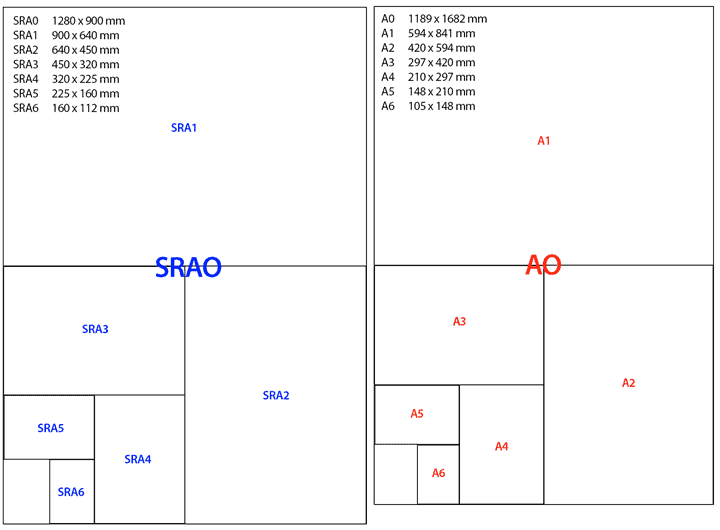
Usage of the ISO 216 Standard A Paper Sizes
A Series is the most common in use Paper Series worldwide for handicrafts, painting, printing, legal works, official documents, letters, and everything else. All the countries that have accepted to use the ISO Standards use these ISO 216 Standards for Paper Sizes.
It has been widely standard, and it becomes easier to handle paper, documents, transport, and mailing. Of all the A Paper Sizes, A4 is the most widely in use; and has now become the standard business letter paper size in Countries that were once British Colonies; and utilized their British Imperial Sizes. You can also get the details of a4 paper size in inches through the table.
A3 and A2 Sizes are widely used for Artwork and by school-level Painters, while the A1 size is used primarily by Architects for designing building plans and by Artists for Paper as well as Canvas Paintings. The smaller A5, A6, and A7 sizes are used for Greeting Cards, Business Cards, and other purposes. Business personnel uses the most petite A9 and A10 sizes as Cue Cards.
Related: How to override Paper Size Mismatch
FAQs
What is the biggest size of print paper available?
In terms of height, A0 paper is similar to one meter. It is the biggest A-series paper, measuring 841 x 1189mm.
What are the applications of A0 paper?
A0 is mostly used for technical drawing. It necessitates sheets large enough for a design to fit comfortably without the assistance of a magnifying lens. It may also be used for posters, albeit the most common sizes are 700 x 1000 mm and 1000 x 1400 mm.
What is the actual paper size?
The most common paper size in English-speaking nations is A4, which measures 210mm 297mm (8.27 inches 11.7 inches).
What is the most appropriate print size?
4
What exactly is print resolution?
Print resolution is the maximum number of ink droplets a printer deposits in one square inch of your final printed picture. This is sometimes referred to as dots per inch (DPI).
What is the purpose of the A6 paper?
Because of its compact size, A6 paper is a popular choice for small brochures, postcards, and flyers. They are occasionally used to manufacture miniature pocketbooks, library microfiches, and toilet paper.
Why is paper referred to as A4?
The number 'four' in A4 paper alludes to its dimensions being the same as a sheet of A0 paper that has been sliced in half four times.
What is the meaning of AO in drawing?
An Ambient Occlusion (AO) map is a grayscale map with illumination data. It is not frequently used as a standalone map but rather in conjunction with the diffuse map to bake in soft shadows.
What is the significance of paper sizing?
Sizing applies to paper during manufacturing to limit the material's tendency to absorb liquid when dry, allowing inks and paints to remain on the paper's surface and dry there rather than being absorbed into the paper.
Final Words
So, these were all the standard A Paper Sizes. This post also contains a whole paper sizes chart, along with a paper sizes table. So, you can use the table if you’re looking for sizes such as a6 size in cm, a3 size in pixels, or even a4 size in inches.
We would also like to hear from you if you think we can add or update any other useful a paper sizes. You can comment below for your request or your feedback apart from contacting us.
See Also: Executive Paper Size


